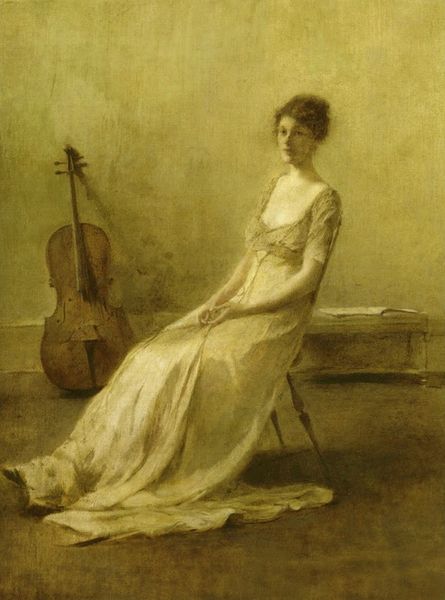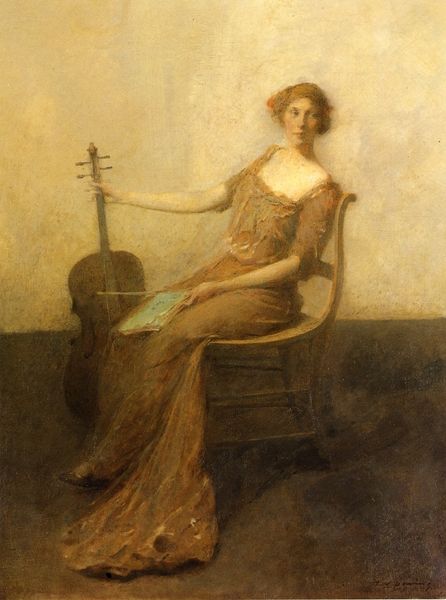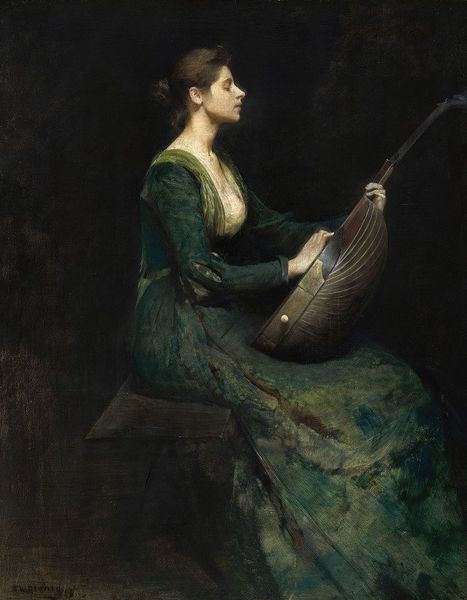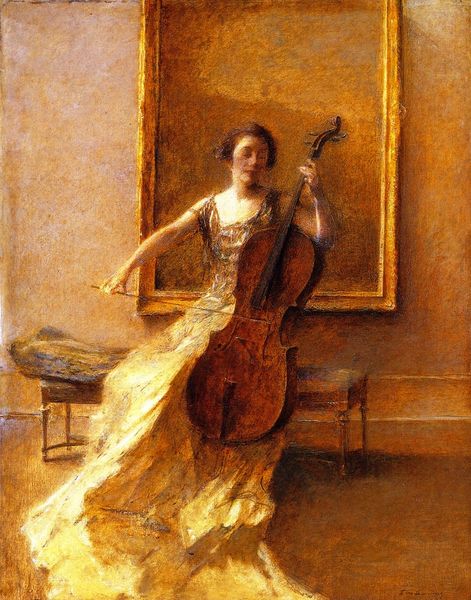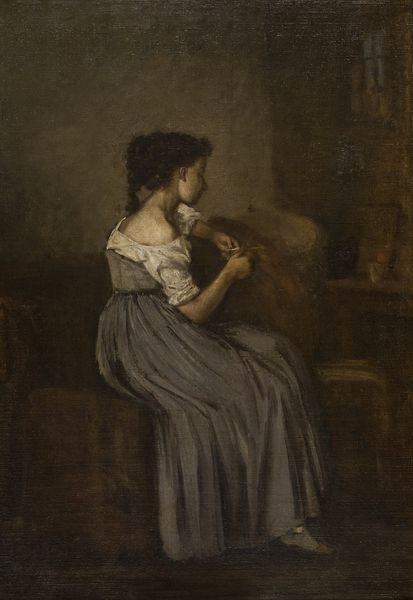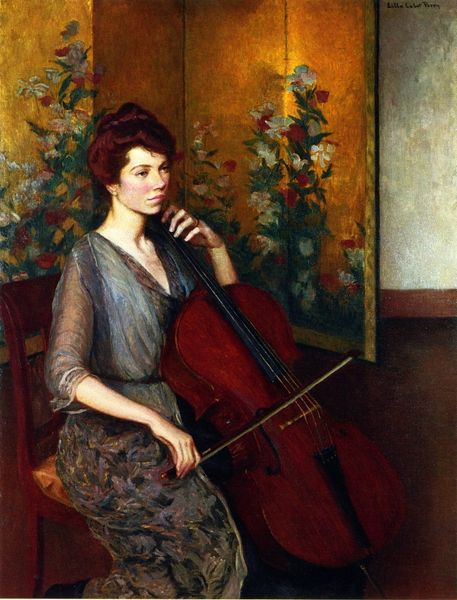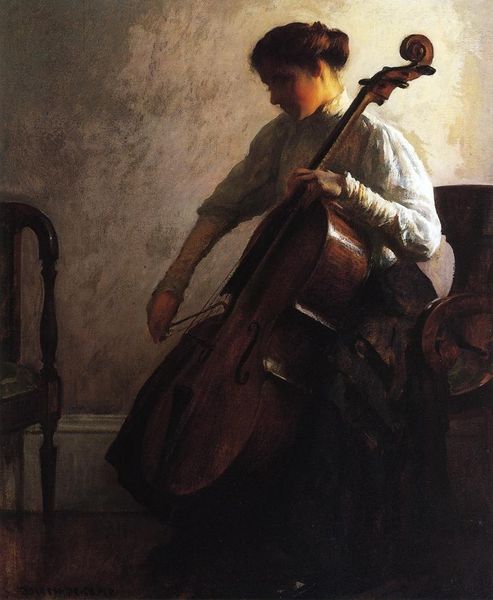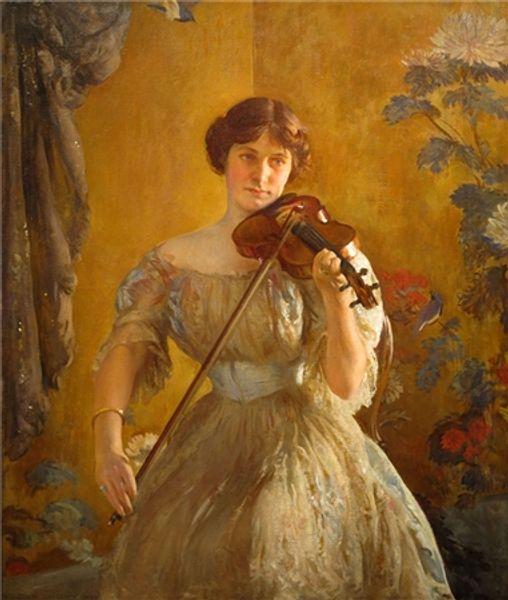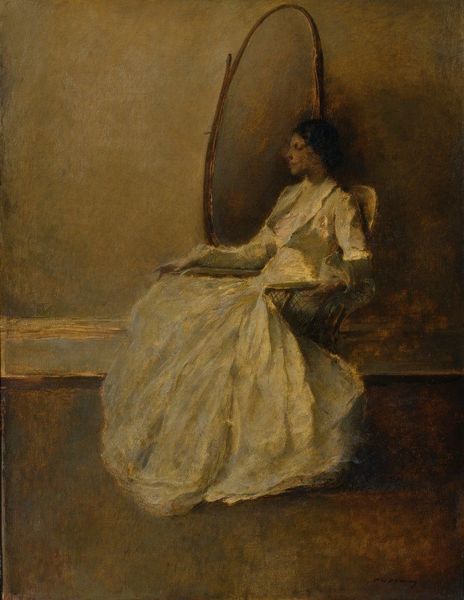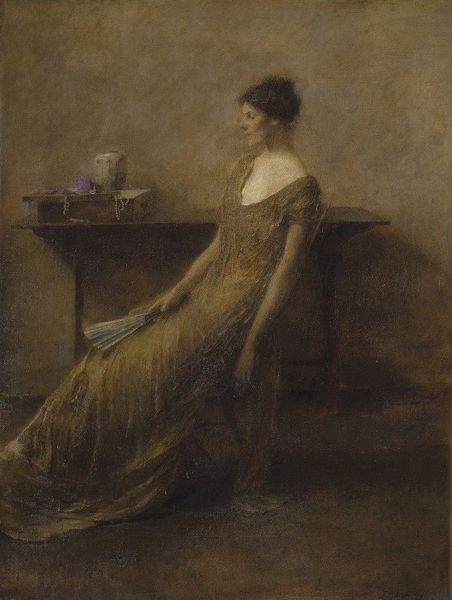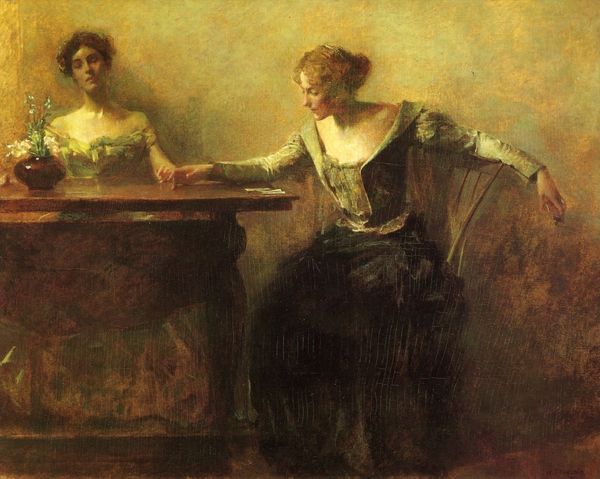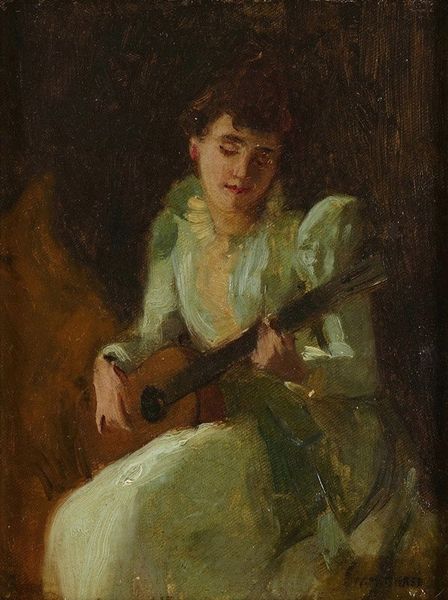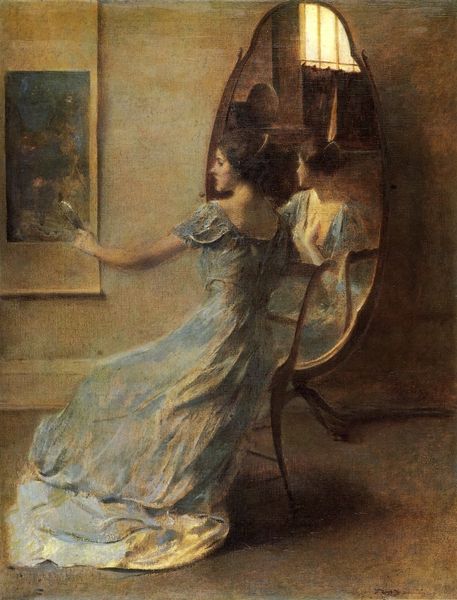
painting
#
portrait
#
painting
#
impressionism
#
figuration
#
portrait drawing
#
genre-painting
#
lady
Copyright: Public domain
Curator: Here we have "Lady with a Cello" by Thomas Wilmer Dewing, an American artist known for his elegant and often enigmatic portrayals of women. What strikes you initially about this painting? Editor: The subdued palette, immediately. There’s a certain melancholy that seems to permeate the canvas, and she appears almost consumed by the instrument at her side. I wonder, what’s the historical context? Was this painted during a period of societal restriction for women? Curator: Possibly, though I’m drawn more to the formal composition itself. Notice how Dewing employs a limited range of tones, mostly greys and muted browns, to create a harmonious, almost musical arrangement. The woman’s form is echoed in the curves of the cello, creating a sense of unity. Editor: While the aesthetic harmony is undeniable, I can't help but consider the woman’s placement within that structure. She seems almost trapped by the darkness of her dress and the dominating form of the cello. This reading suggests a societal constraint. Perhaps, she could only express herself through art in this setting. Curator: That’s an intriguing reading, however, I find the way the light delicately caresses her face particularly compelling. It draws our eye to her expression, which, while contemplative, also carries a hint of quiet strength. Editor: I see the delicate treatment of the face, but that, to me, amplifies the question: What is she thinking? It would be fascinating to research if women playing the cello in that era had avenues to turn art into empowerment or agency. Or did it perpetuate, rather, an image of a certain type of genteel lady. Curator: Dewing seems far more interested in creating an aesthetic experience through subtle arrangements of color and form, an emphasis on pure beauty achieved via skillful formal structures. Perhaps it's enough to let the aesthetic be the dominant experience. Editor: Perhaps... Still, art is always produced in dialogue with its context. It feels reductive to divorce these compositions from that interplay. Thank you, these differing views highlight the power and enduring appeal of Dewing's painting. Curator: Yes, the composition, color and subject are compelling elements of art for audiences, still, and allow for differing viewpoints on meaning to continue in new contexts.
Comments
No comments
Be the first to comment and join the conversation on the ultimate creative platform.
